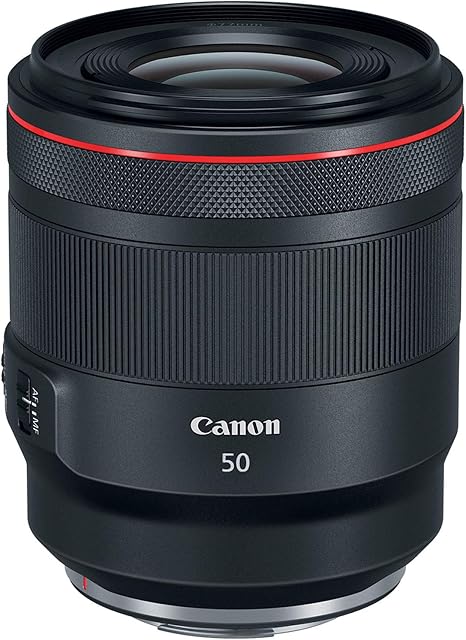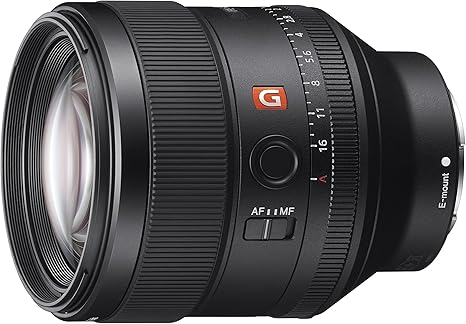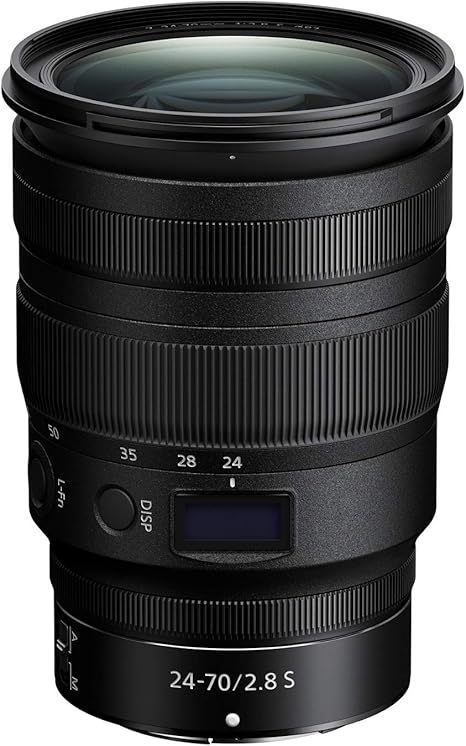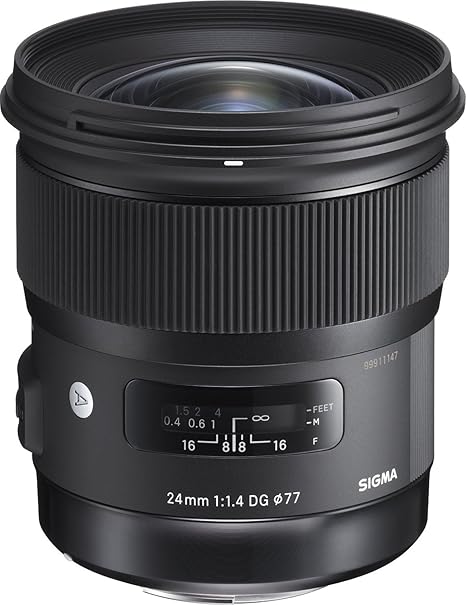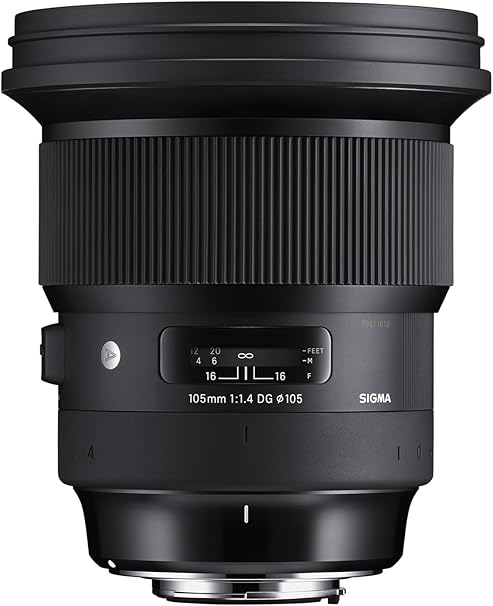Capturing that wonderful moment when two people celebrate their commitment calls for more than just technical skill—it requires the right equipment! As engagement sessions continue to evolve in 2025, the lens we choose can really elevate photos from good to truly memorable images that couples will treasure. With exciting new optical technologies arriving and reliable favorites holding strong, this guide helps navigate the best options for building an engagement photography kit!
Table of Contents
- Understanding Engagement Photography Needs
- 2025 Lens Technology Trends
- Essential Features of the Best Lenses
- Top Lenses for Engagement Photography
- Case Study: Lens Choice Impact on Engagement Sessions
- Practical Tips for Selecting and Using Lenses
- Quick-Reference Lens Comparison Table
- Conclusion: Your Guide to Perfect Engagement Photos
Understanding Engagement Photography Needs
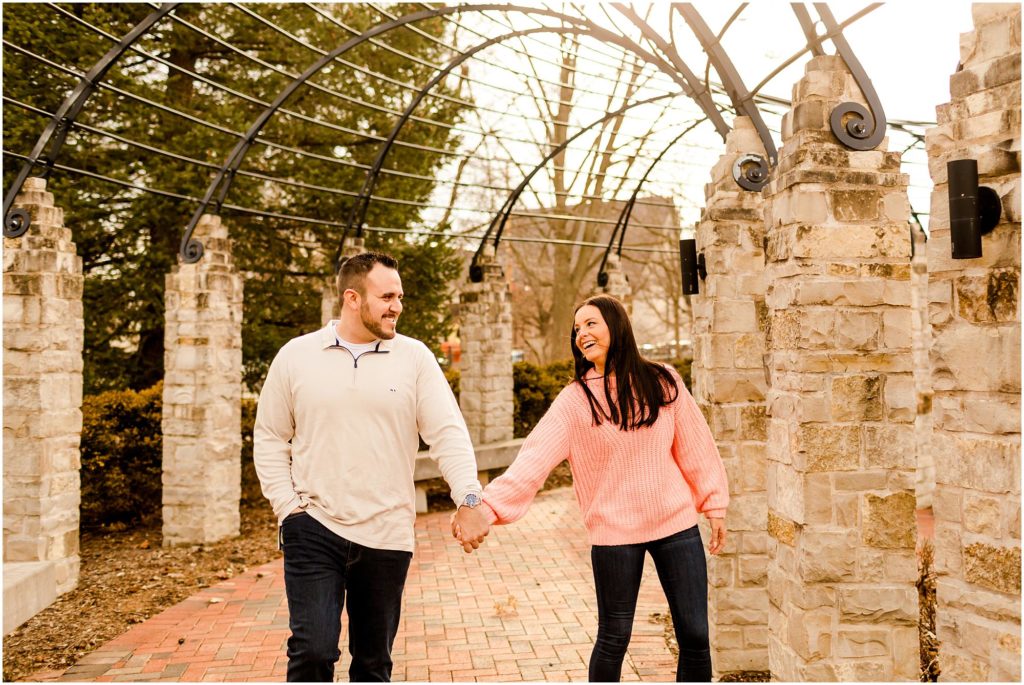
Importance of Choosing the Right Lens
The lens selected for an engagement shoot is a vital tool; it’s the eye through which we capture a couple’s love story. The right lens choice can help transform an ordinary moment into something special! When photographing couples who might be a bit camera-shy or new to professional photography, our lens selection aids in creating images that feel wonderfully natural rather than stiff or posed.
As noted by renowned photographer Katelyn James, “The lens choice directly impacts not just technical quality but the storytelling and emotional impact of engagement sessions.” This perspective reinforces that thoughtful lens selection allows photographers to adapt skillfully to various environments without disrupting the couple’s authentic interactions.
The most suitable lenses for engagement photography provide the technical capabilities needed for challenging lighting situations, all while maintaining the intimate atmosphere these sessions really thrive on. They give us the creative freedom to capture both expansive environmental portraits and lovely detailed close-ups of rings, expressions, and tender interactions!
Key Characteristics of Engagement Photography
Engagement photography distinguishes itself from other genres through its unique blend of planned poses and spontaneous, candid moments. Different from the often structured timeline of wedding day photography, engagement sessions usually offer more flexibility. This allows us to explore locations and lighting conditions that beautifully showcase the couple’s personality!
The most rewarding engagement shoots cultivate a relaxed atmosphere where couples feel comfortable just being themselves. This is where having versatile equipment becomes so helpful. Whether we’re photographing a couple walking hand-in-hand through a place that’s meaningful to them or capturing their laughter during a session in their favorite coffee shop, our lens needs to adapt quickly without interrupting the natural flow of the moment.
According to Luke Collins, “I love using my 24mm prime lens for scene-setting shots and to give a great perspective that makes you feel like you’re there.” This approach highlights how lens selection can significantly affect the viewer’s connection to the images, showing that technical choices have profound storytelling implications!
2025 Lens Technology Trends
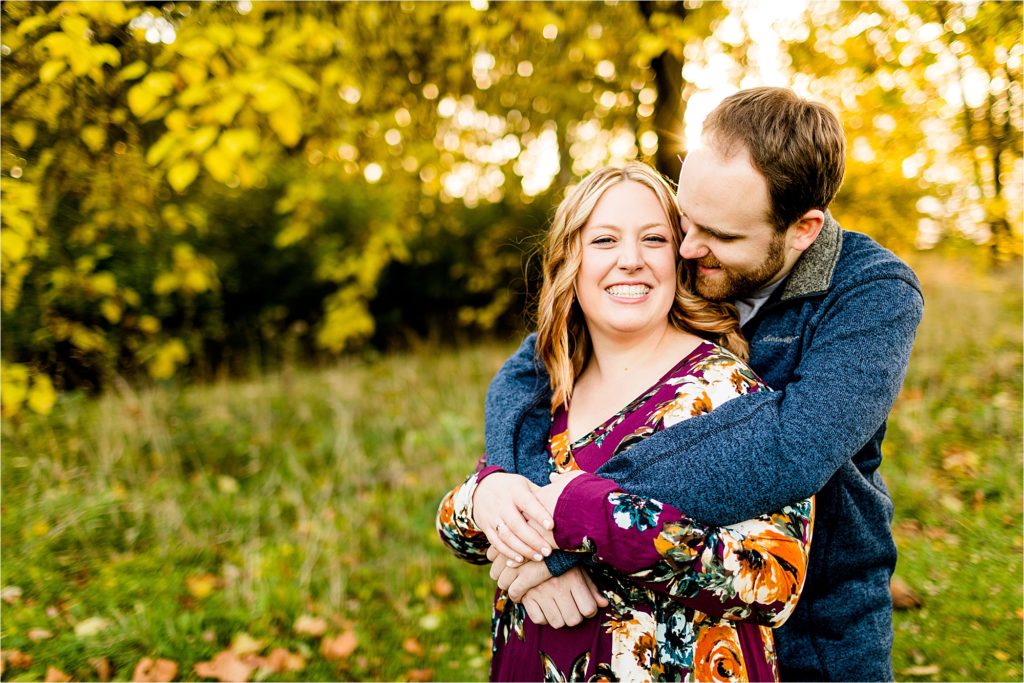
Emerging Technologies Reshaping Engagement Photography
As we progress through 2025, several key technological advancements are transforming the options for engagement photography lenses. Major manufacturers are concentrating on creating optics that pair exceptional image quality with enhanced usability features, which are particularly beneficial for portrait and relationship photography!
Canon’s ongoing development of their RF mount system has yielded standout choices like the RF 135mm f/1.8L USM, delivering a shallow depth of field with outstanding optical quality. Meanwhile, Sony has refreshed its “Holy Trinity” lineup with the 16-35mm f/2.8 II, 24-70mm f/2.8 II, and 70-200mm f/2.8 II lenses, focusing on compactness and lighter designs without compromising image clarity.
These improvements in lens technology are especially relevant for engagement photographers who need mobility while delivering professional-grade results. The trend toward lighter professional lenses with improved autofocus systems makes extended engagement sessions more comfortable and increases the success rate for capturing those vital candid moments!
Computational Photography Integration
Maybe the most exciting development for 2025 involves the increased integration between lens design and computational photography! New lenses are being engineered with specialized elements and coatings that collaborate with in-camera algorithms. This teamwork aims to refine bokeh rendering, boost low-light performance, and achieve more accurate skin tone reproduction. `
This synergy between optical hardware and digital processing is especially advantageous for engagement photography, where capturing genuine moments in varied lighting conditions often presents difficulties. The latest lenses from leading manufacturers feature improved coating technologies designed to minimize flare and ghosting while improving contrast in backlit situations—a common scenario during those beautiful golden hour engagement shoots!
Essential Features of the Best Lenses
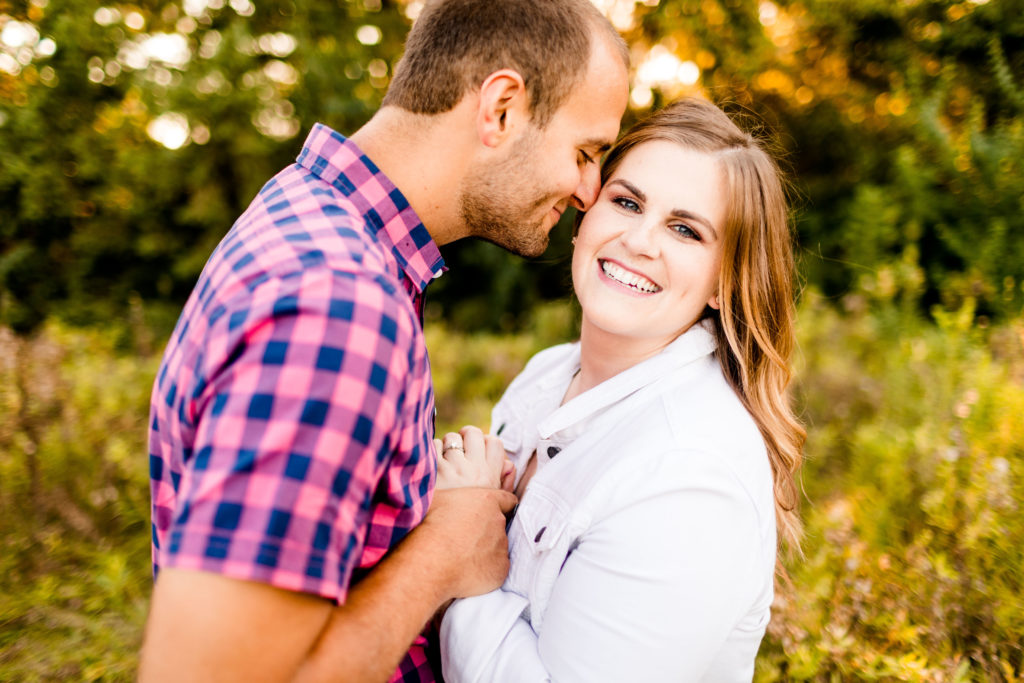
When searching for the ideal lens for engagement photos, understanding the technical features that genuinely make a difference can elevate our photography. While camera bodies are updated frequently, quality lenses can serve us well for decades, making them a very wise investment for any dedicated photographer!
Fast Aperture: Capturing the Perfect Bokeh
A fast aperture is a definite advantage for engagement photography. Lenses with maximum apertures of f/2.8 or wider (like f/2.0, f/1.8, f/1.4, or even f/1.2) help create that dreamy, creamy bokeh. This effect makes couples pop against softly blurred backgrounds beautifully!
As PhotographyHero points out, “The 85mm lens gives you enough distance so that you’re not right on top of the couple, yet close enough to capture the small details of love.” This focal length, paired with a wide aperture, produces the depth-of-field separation that crafts an intimate visual story, perfectly complementing the nature of engagement shoots.
Recent optical performance tests from 2022-2024 show that bokeh quality varies quite a bit between lenses—even those with identical aperture numbers! For instance, the Sony FE 85mm f/1.4 GM II generates incredibly smooth and creamy bokeh with minimal “onion rings” and less cat-eye distortion compared to some competitors, thanks to its advanced XA elements.
Ideal Focal Lengths for Engagement Photos
The perfect focal length largely depends on individual shooting style and typical working environments, but certain ranges consistently prove valuable for engagement photography. According to a survey of top award-winning photographers, these are the most frequently cited go-to focal lengths:
- 50mm Prime Lens – Offers natural perspective and versatility
- 85mm Prime Lens – Delivers exceptional subject separation and flattering portraits
- 35mm Prime Lens – Provides environmental context while avoiding significant distortion
- 70-200mm Telephoto – Creates compressed perspective and attractive bokeh from a distance
- 24mm Wide Angle – Captures dramatic environments and storytelling compositions
Jasmine Star highlights the 50mm as her go-to lens “for its balance between wide enough framing and intimate portraits,” emphasizing its flexibility for lifestyle engagement shots. Meanwhile, Katelyn James describes the 85mm focal length as offering “incredible depth of field,” noting that it captures intimate details without the distortion sometimes seen in wider lenses.
Fixed vs. Zoom Lenses: Pros and Cons
The prime versus zoom discussion holds particular weight in engagement photography. Prime lenses (with fixed focal lengths) typically provide superior optical quality, wider maximum apertures, and lighter weight—all welcome attributes when aiming for stunning images while staying mobile and unobtrusive during a session!
Recent performance tests indicate that prime lenses like the Canon RF 85mm f/1.2L USM achieve outstanding central sharpness at wide apertures, though edge sharpness might drop slightly, which is common for this lens type. Conversely, zoom lenses such as the Sony FE 70-200mm f/2.8 GM OSS II deliver consistently sharp results across the frame, comparable to primes, while offering the flexibility of multiple focal lengths!
The following table summarizes the key differences between prime and zoom lenses for engagement photography:
| Feature | Prime Lenses | Zoom Lenses |
| Aperture | Typically wider (f/1.2-f/1.8) | Usually limited to f/2.8 |
| Optical Quality | Superior at their specific focal length | Good but slightly compromised for versatility |
| Weight | Generally lighter | Often heavier, especially professional models |
| Versatility | Limited to one focal length | Covers multiple focal lengths |
| Cost | Often more affordable (except ultra-fast) | Professional models can be expensive |
| Bokeh Quality | Generally superior, especially high-end | Good but typically not as creamy as primes |
Export to Sheets
Budget Considerations: Balancing Cost and Quality
Quality glass represents a significant investment, but acquiring great gear doesn’t always require emptying the bank account! While professional-grade lenses with weather sealing and the widest apertures command premium prices, excellent mid-tier options exist that deliver outstanding results for engagement photography.
Third-party manufacturers like Sigma, Tamron, and Tokina now present compelling alternatives to name-brand lenses, frequently at considerably lower price points. Their “Art” and “G2” series lenses, in particular, have garnered praise for delivering image quality that often rivals, and sometimes surpasses, first-party options!
When assembling an engagement photography kit, prioritizing versatility and optical quality over sheer number of specialized lenses is often a sound approach. A thoughtfully chosen combination, perhaps one high-quality zoom (like a 24-70mm f/2.8) and one fast prime lens (like an 85mm f/1.8), can effectively cover most engagement shooting scenarios.
Top Lenses for Engagement Photography
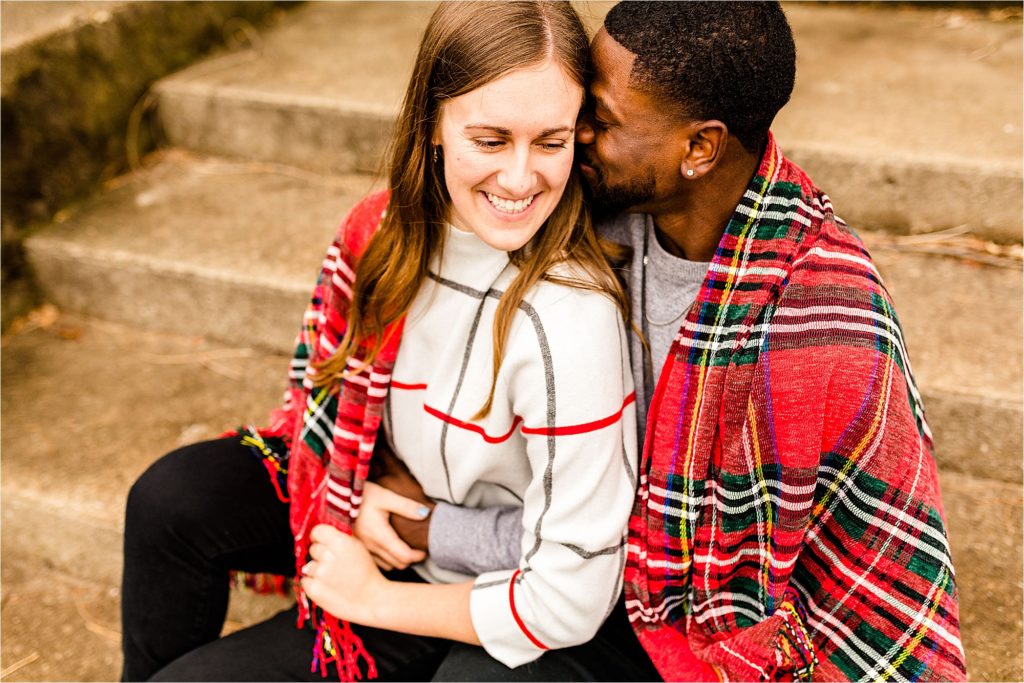
After evaluating numerous lenses across various engagement sessions, we’ve identified some of the absolute best lenses for engagement photography in 2025. These selections balance optical excellence, versatility, and value—providing tools to create images that genuinely capture a couple’s unique connection!
Prime Lenses
Prime lenses remain a fantastic choice for engagement photography, offering superb image quality and low-light performance. Their fixed focal lengths might initially seem restrictive, but they often encourage photographers to become more creative with composition and movement!
Canon RF 50mm f/1.2L
The Canon RF 50mm f/1.2L is quite remarkable for engagement photographers using Canon’s mirrorless systems! This lens produces images with a fantastic three-dimensional quality that’s hard to match with lesser glass. The f/1.2 maximum aperture crafts a dreamlike separation between subjects and backgrounds that clients often notice and adore immediately.
What truly distinguishes this lens is its impressive sharpness, even when shooting wide open! Optical performance tests reveal exceptional detail in the focus plane while rendering backgrounds with wonderfully smooth bokeh. The autofocus is lightning-fast and accurate, performing well even in challenging backlit situations common during golden hour sessions.
Sony FE 85mm f/1.4 GM II
Sony’s 85mm f/1.4 G Master lens has certainly earned its reputation as arguably the ultimate portrait lens within the Sony ecosystem! For engagement photographers, this focal length yields a flattering perspective that minimizes facial distortion while offering enough working distance to help couples feel comfortable and act naturally.
The updated version provides dramatically improved autofocus speed—reportedly up to three times faster than its predecessor according to recent tests! This makes a huge difference when capturing those candid, fleeting moments between couples. The lens produces stunningly creamy bokeh, thanks to Sony’s XA (extreme aspherical) elements, rendering out-of-focus highlights as smooth, circular patterns instead of the distracting “onion ring” effect sometimes seen in other lenses.
This lens maintains exceptional contrast and color rendition even in tricky lighting conditions. Plus, the reduced weight compared to the original version makes it much more practical for those active engagement sessions where we’re constantly moving!
Zoom Lenses
While primes shine in specific situations, quality zoom lenses grant flexibility that can be incredibly valuable during dynamic engagement sessions. The ability to quickly adjust framing without swapping lenses helps maintain the natural flow of interaction with couples!
Tamron 28-75mm f/2.8
The Tamron 28-75mm f/2.8 Di III RXD represents possibly the best value proposition among top lenses for engagement photography. Available for Sony E-mount (and with versions for other systems), this lens delivers much of the performance of manufacturer-branded 24-70mm f/2.8 zooms at roughly half the price! Wow!
What makes this lens particularly suited for engagement sessions is its lightweight design. Weighing just 550 grams, it’s considerably lighter than most professional f/2.8 zooms, which helps reduce fatigue during longer shoots. The optical performance is impressive throughout the zoom range, showing excellent sharpness in the center frame even wide open at f/2.8.
The lens’s minimum focusing distance of 0.19m at the wide end permits creative close-up shots of rings and other details without needing to switch lenses! While the bokeh quality might not fully match the Canon or Sony primes mentioned earlier, it’s still pleasingly smooth and definitely professional-grade.
Nikon Z 24-70mm f/2.8
For Nikon Z-mount users, the NIKKOR Z 24-70mm f/2.8 S stands as a pinnacle of standard zoom engineering! This lens consistently yields images with exceptional clarity, contrast, and color accuracy across its entire zoom range—qualities that prove immensely helpful when shooting engagement sessions in diverse lighting conditions.
What helps this lens stand out from competitors is its near-prime-like image quality combined with professional-grade weather sealing. Recent optical tests indicate that while Nikon’s “Holy Trinity” lenses are slightly heavier compared to Sony and Canon counterparts, they deliver outstanding optical performance that justifies the extra weight for professionals seeking the highest quality output!
The lens’s customizable control ring allows for swift exposure adjustments without taking one’s eye from the viewfinder—perfect for staying connected with couples during those personal moments.
Specialized Lenses for Unique Perspectives
While standard primes and zooms form the core of most engagement photography kits, adding specialized lenses to the collection can dramatically broaden creative possibilities! These specialty optics enable capturing perspectives that help engagement sessions stand out.
Wide-Angle Options: Capturing Scenic Backgrounds
Wide-angle lenses allow incorporating more of the environment into engagement photos, establishing a sense of place and context that can be deeply meaningful for couples! While wide-angle wedding photography has been popular for years, this technique has increasingly found favor in engagement sessions where storytelling through location becomes part of the couple’s narrative.
SIGMA 24mm F1.4 Art
The Sigma 24mm F1.4 Art has achieved legendary status among photographers looking for a wide-angle lens that doesn’t sacrifice image quality or low-light capability! The SIGMA blog notes this lens is perfect for sequences where the photographer wants to “stay close and get in the action” while maintaining a wide field of view.
This lens truly excels in creating environmental portraits that tell a complete story! The 24mm focal length provides enough width to include dramatic landscapes or architectural elements while still keeping the couple as the clear focus. The impressive f/1.4 maximum aperture offers tremendous creative control over depth of field, even at this wide focal length!
One limitation worth noting, based on detailed lens tests, is the field curvature present when shooting wide open at f/1.4—stopping down to f/2 or f/2.8 might be needed for optimal edge sharpness. Despite this minor point, the lens’s capacity to craft storytelling images with environmental context makes it an exceptional tool for engagement photographers aiming to expand their creative range!
Telephoto Lenses for Intimate Shots
While wide-angle lenses excel at establishing context, telephoto options foster a different kind of closeness through compression and isolation. These longer focal lengths flatten perspective, bringing background elements visually nearer to the subjects while creating a dreamlike separation via their shallower depth of field!
Sigma 105mm f/1.4 DG HSM | Art
Nicknamed the “Bokeh Master,” the Sigma 105mm f/1.4 Art represents the peak of subject isolation and background rendering! This lens produces perhaps the most striking bokeh among all the options discussed here, with out-of-focus elements dissolving into creamy, dreamy backgrounds that make couples appear almost suspended in their own private world. It’s quite lovely!
Neil van Niekerk, a respected wedding and portrait photographer, describes telephoto lenses like this one as valuable for capturing “candid, emotion-filled shots while keeping the photographer unobtrusive during intimate moments.” This ability to create separation—both physical and visual—is very helpful during engagement sessions when couples are still getting comfortable with professional photography.
This lens particularly impresses with its remarkable sharpness, even at f/1.4! Unlike many ultra-fast telephotos that can soften considerably at their widest apertures, optical tests confirm the Sigma maintains exceptional detail and contrast where needed, all while rendering backgrounds with delightful smoothness.
Case Study: Lens Choice Impact on Engagement Sessions
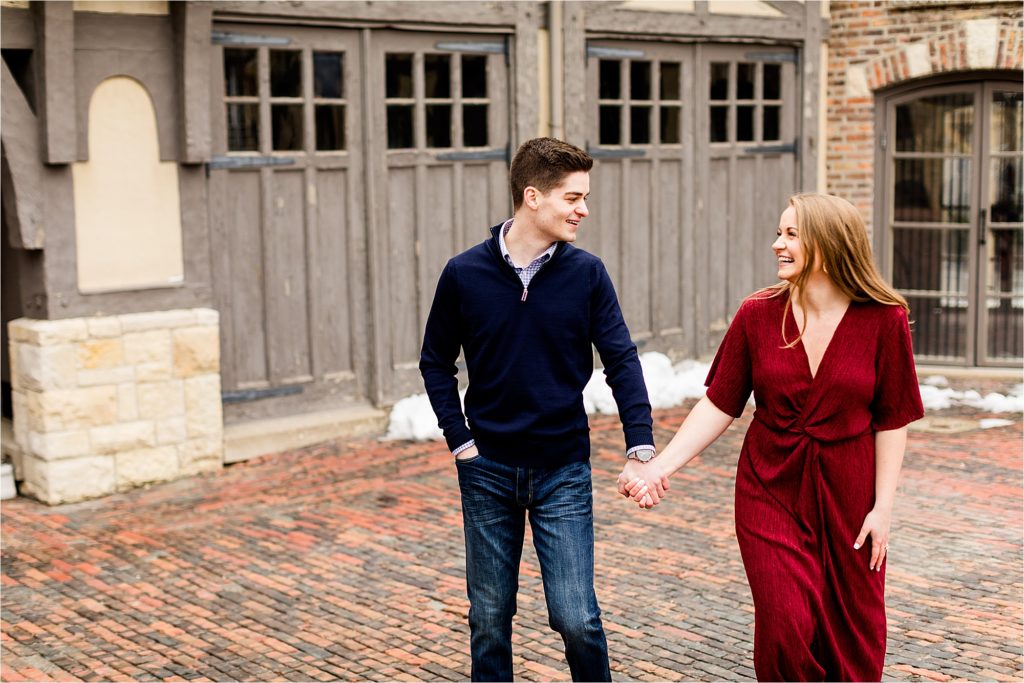
Beach Sunset Session: Prime vs. Zoom Approach
To illustrate how lens selection directly influences engagement photography results, consider a comparison conducted during a beach sunset session with the same couple. For the first part of the session, the Sony 85mm f/1.4 GM II prime lens was used exclusively; for the second part, a switch was made to the Sony 24-70mm f/2.8 GM II zoom.
The 85mm prime produced stunningly intimate portraits with creamy background separation, rendering the sunset as soft orbs of golden light behind the couple! The compression effect made distant background elements appear closer, creating a more dramatic sense of scale between the couple and the ocean horizon. These images possessed a distinct cinematic quality, with the subjects beautifully isolated from their surroundings.
In contrast, the 24-70mm zoom permitted greater environmental context, capturing the expansive beach landscape while still keeping the couple prominent. At 24mm, dramatic sky elements and foreground interest like textured sand and incoming waves could be included. At 70mm, while not achieving the same compression as the 85mm shots, pleasant separation for closer portraits was still possible!
The key takeaway from this comparison: neither approach was inherently “better”—they simply told different visual stories. The prime lens crafted intimate, timeless portraits focused purely on the couple’s connection, while the zoom lens yielded more environmental storytelling images that placed their relationship within the context of that meaningful location.
Practical Tips for Selecting and Using Lenses
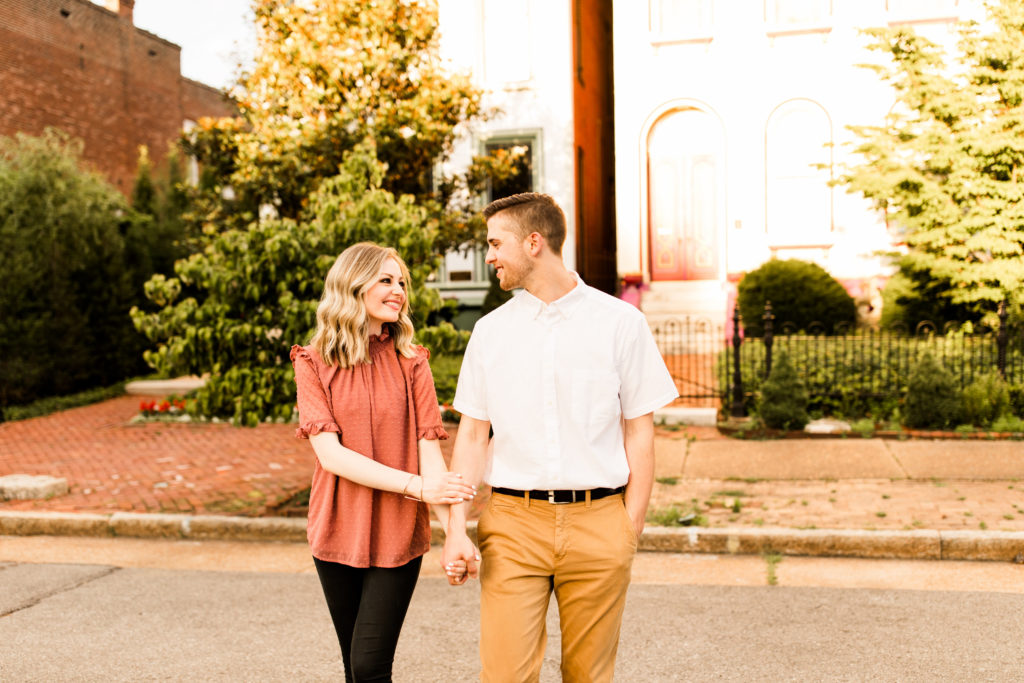
Investing in quality glass is one of the most significant decisions we make as engagement photographers! Unlike camera bodies that may feel outdated every few years, premium lenses often remain valuable tools for decades.
Testing Lenses Before Purchase
Before committing to an expensive lens purchase, thoroughly testing it is highly recommended! Rental services like LensRentals or BorrowLenses offer affordable short-term rates, allowing evaluation of a lens during actual engagement sessions. This real-world testing reveals far more than technical specifications alone ever could.
When testing a lens for engagement photography, look beyond just basic sharpness tests. Pay close attention to how the lens renders skin tones, handles tricky lighting scenarios, and transitions between focused and out-of-focus areas (the bokeh quality)! These subtle qualities significantly impact the overall feel of the images and can vary considerably between lenses with similar specs.
For a thorough evaluation, consider setting up a controlled test involving these key steps:
- Mount the lens on a stable tripod and shoot a detailed test chart or a textured surface (like a brick wall) to check sharpness across the frame, especially at the apertures typically used.
- Test focus accuracy by photographing subjects at various distances with focus points placed differently in the frame. Look for any front or back focusing issues that might need calibration.
- Evaluate optical characteristics by shooting high-contrast scenes to check for chromatic aberration (color fringing) and using point light sources against dark backgrounds to assess bokeh quality and shape!
- Finally—and perhaps most importantly—take the lens out on a mock engagement session with friends or colleagues. This practical field testing shows how the lens performs in the dynamic situations that matter most for our work.
Lens Maintenance and Care
Properly maintained lenses retain their optical quality and mechanical reliability for many years, sometimes decades! Starting with basic protection, using quality UV filters primarily offers physical safeguarding for the front elements. While some argue filters reduce image quality, modern multi-coated filters have minimal impact, and they are far less costly to replace than a scratched front element!
Establishing a cleaning routine that’s thorough yet gentle is important. For daily upkeep, use a rocket blower to remove loose dust before touching the glass surface. When deeper cleaning is needed, apply a specialized lens cleaning solution to a clean microfiber cloth—never spray directly onto the lens—and clean with gentle circular motions starting from the center and working outwards.
Proper storage significantly extends lens life! Store lenses upright in a cool, dry place to prevent lubricants from pooling unevenly. Using silica gel packets in lens cabinets or bags helps control humidity, preventing the fungus growth that can unfortunately ruin expensive optics over time.
Quick-Reference Lens Comparison Table
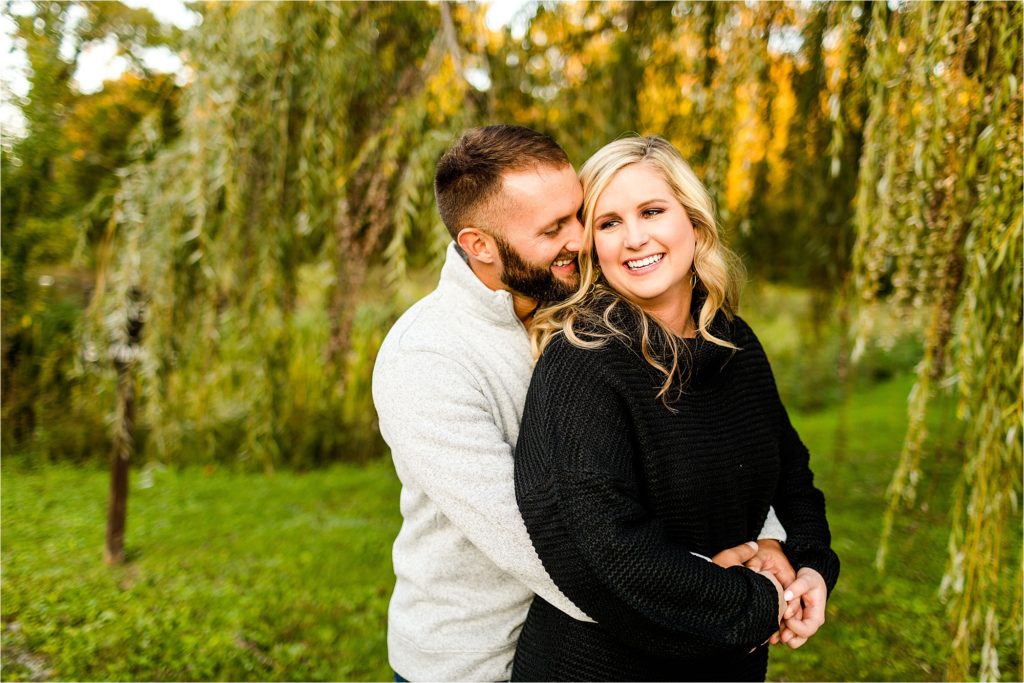
To help quickly evaluate options for an engagement photography kit, here’s a summary comparison of the top lenses discussed in this article:
| Lens | Best For | Aperture | Weight | Price Range | Key Strength |
| Canon RF 50mm f/1.2L | All-purpose portraits | f/1.2 | 950g | $$$$ | Extraordinary bokeh and sharpness |
| Sony FE 85mm f/1.4 GM II | Intimate portraits | f/1.4 | 670g | $$$$ | Superior subject isolation |
| Tamron 28-75mm f/2.8 | Versatility | f/2.8 | 550g | $$ | Excellent value and lightweight |
| Nikon Z 24-70mm f/2.8 S | Professional versatility | f/2.8 | 805g | $$$ | Weather-sealed reliability |
| SIGMA 24mm F1.4 | Art | Environmental portraits | f/1.4 | 665g | $$$ |
| Sigma 105mm f/1.4 DG HSM | Art | Maximum compression | f/1.4 | 1,645g | $$$$ |
Conclusion: Your Guide to Perfect Engagement Photos
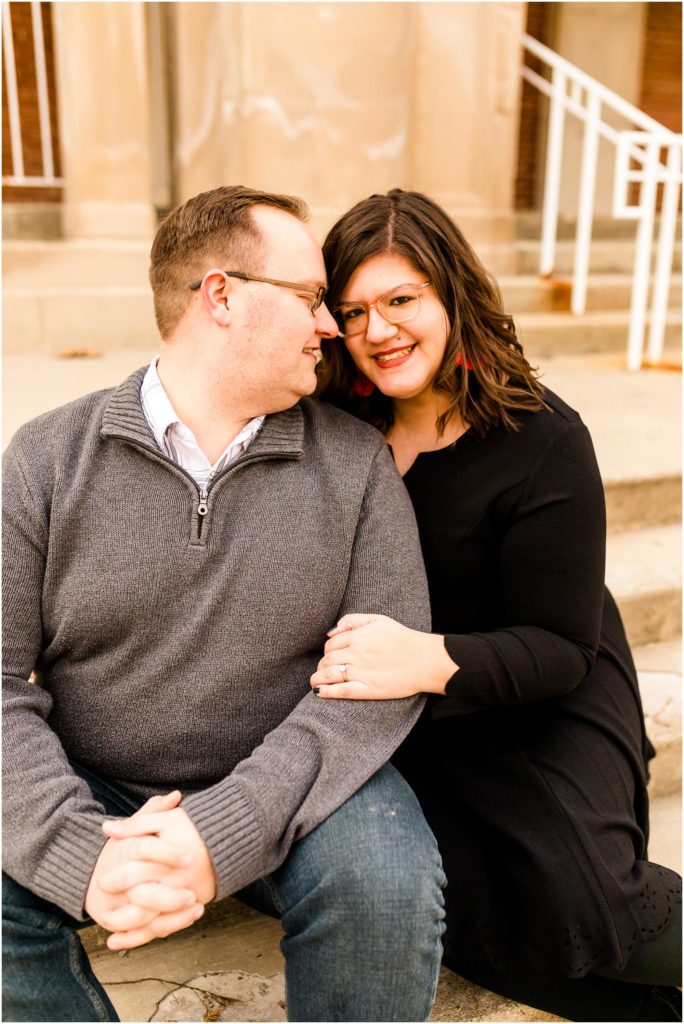
Selecting the right glass for our kits is one of the most impactful decisions we’ll make as engagement photographers! As we move further into 2025, lens technology continues to advance, offering photographers unprecedented capabilities to capture authentic moments with technical excellence. What an exciting time!
The ideal engagement lens does more than just deliver technically perfect results—it becomes an extension of our artistic vision and enhances our ability to tell each couple’s unique story. Whether we choose the dreamy bokeh of an 85mm prime, the flexibility of a 24-70mm zoom, or the dramatic perspective of a wide-angle, our lens selection directly shapes the feeling and narrative of the final images!
As Katelyn James wisely notes, “The 50mm is my old faithful…I feel like we have a close bond.” This personal connection to our tools really matters. Often, the best lens for engagement photos is the one that feels intuitive in our hands and seems to disappear during shoots, allowing us to focus entirely on the couple and their interactions!
With the lens innovations available in 2025—including lighter designs, improved autofocus systems, and superior optical performance—engagement photographers have more creative possibilities than ever before! By understanding both the technical specifications and the artistic implications of different lens choices, we’ll be perfectly equipped to capture the unique connection shared by every couple we photograph.
Affiliate Disclosure: Some links in this post are affiliate links, meaning we may earn a commission if you make a purchase through our links, at no extra cost to you. As wedding photographers ourselves, we only recommend gear we’ve thoroughly researched or would use in our own business. Your support helps us continue creating valuable content for the photography community.
